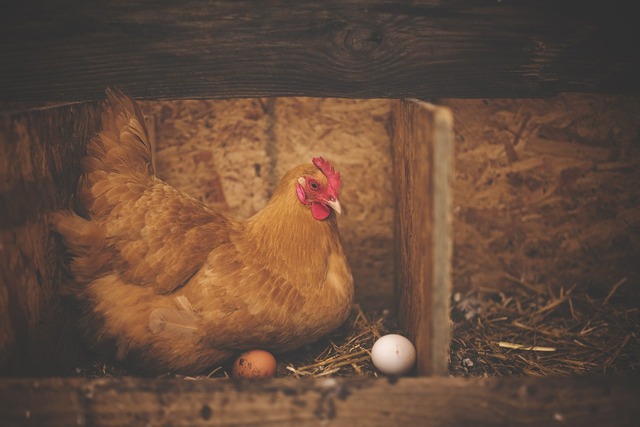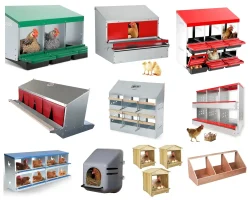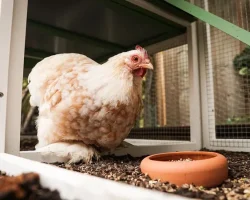You’ve got your coop. You’ve got your chickens. Now it’s time to get the eggs rolling! But your hens won’t be able to lay eggs comfortably until they’ve got cozy chicken nesting boxes. The problem is, there are too many choices and variables at play. How many nesting boxes should you have? What goes inside them? And where’s the perfect spot to put them?
So instead of you having to Google each question one by one, we’ve gathered the top 10 nesting box questions and answered them all right here.
if you are wondering what is the best nesting box to buy, read my review: Top 10 Chicken Nesting Boxes.
1. What Is A Chicken Nesting Box?
Simply put, chicken nesting boxes are cozy, little compartments where your hens can lay their eggs in peace.
They’re designed to mimic the kind of secluded, private spots hens naturally seek out in the wild, away from predators. Nesting boxes encourage your hens to lay in the same spot every time, so collecting eggs doesn’t feel like an Easter egg hunt.
Nesting boxes come in all shapes and sizes, from simple DIY nest boxes to elaborate designs with curtains and roll-out trays. They’re often lined with soft bedding material like straw to create a comfortable, cushioned nest and prevent accidental breakage.
2. Why Do Chickens Need Nesting Boxes?
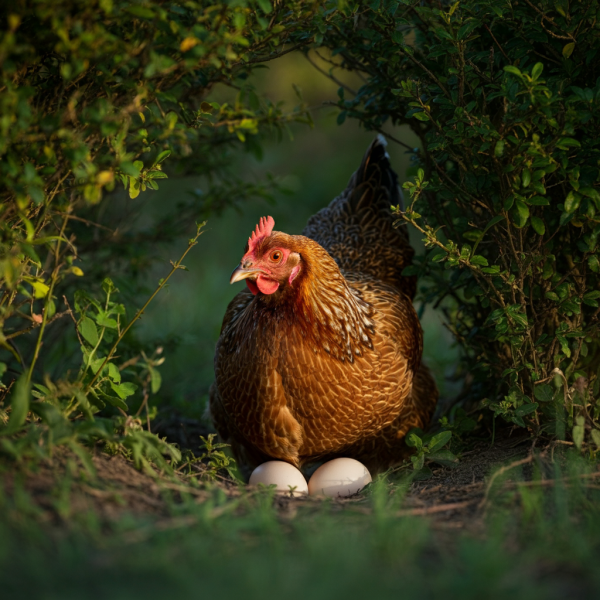
It’s easy to think of chicken nesting boxes as just an accessory, a nice-to-have in your coop. But in reality, they’re a necessity not just for your chickens, but also for you!
In the wild, chickens would seek out secluded spots to lay their eggs, away from predators and prying eyes. Without a designated nesting area, your laying hens will go find their own secret spots. You won’t even know about these creative hideaways until weeks later, when you stumble upon eggs in the weirdest places.
So, while your chickens can technically lay eggs anywhere, using nesting boxes has many benefits:
- Supports your chickens’ natural behavior and instincts
- Promotes harmony in the coop and less squabbling over prime laying spots
- Lowers stress for your hens
- Protects hens and eggs from predators
- Keeps eggs clean
- Keeps eggs in one piece and safe from accidents
- Prevents egg-eating by other chickens
- Helps owners find eggs in a single place!
3. How Many Nesting Boxes Do My Chickens Need?
Most chicken keepers suggest having one nesting box for every 4-5 laying hens. But I recommend a slightly different approach to keep the peace.
For 3 to 5 chickens, I recommend 2 nesting boxes. If you have more chickens, add 1 more nesting box for every 3 additional chickens. So for example:
- For 10 chickens, you’ll need 4 nesting boxes (2 + 2).
- For 20 chickens, you’ll need 7 nesting boxes (2 + 5).
Why more than the basic recommendation? Well, chickens are surprisingly territorial when it comes to their laying space. So having more boxes than the bare minimum reduces tension and keeps things running smoothly in your chicken coop.
Chickens also tend to play favorites with their nesting boxes. So don’t be surprised if one box gets all the use while others sit empty. Make sure all nesting boxes are identical in size, shape, bedding material, and lighting to prevent any one box from seeming superior to the others.
Observe your chickens’ behavior. If you find too many eggs crammed in a single box or eggs laid on the floor, you may need to adjust the number of nesting boxes.
4. What Size Should A Chicken Nesting Box Be?
The size of your nesting boxes plays a huge role in keeping your hens comfortable and happy. Too small, and they’ll feel cramped. Too large, and they might not feel secure.
The ideal nesting box size depends on the chicken breed and size. Most chicken breeds, like Leghorns or ISA Brown, need a 12 x 12 x 12 inches (30 x 30 x 30 cm) wide, long, and deep nesting box. For larger chicken breeds, like Orpingtons or Rhode Island Reds, you need to supersize your nesting box to 14 x 14 x 14 inches (35 x 35 x 35 cm). For small bantam breeds, 10 x 10 x 10 inches (25 x 25 x 25 cm) is enough.
5. What Is A Rollout Nest Box?
There are two types of nesting boxes: traditional and rollout nest boxes. In traditional nest boxes, the egg stays within the nest box. Rollout nest boxes come with a practical design with an inclined surface and, as the name suggests, eggs roll out the nest box in a separate compartment.
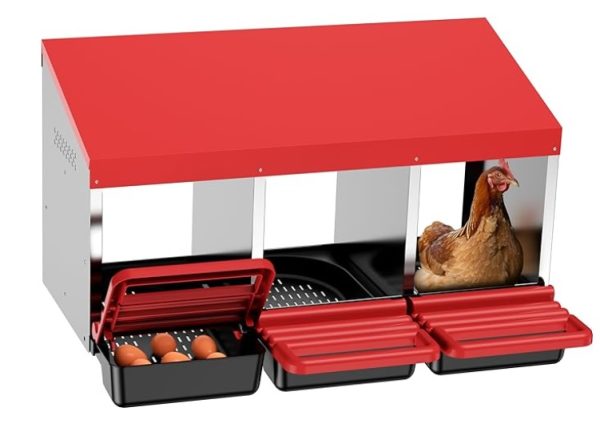
Benefits Of A Rollout Chicken Nesting Box
The inclined design rolls the egg into a special compartment when it is laid, to keep it clean and safe from damage. In traditional nest boxes, the longer eggs sit, the dirtier they get, and the higher the risk of damage by chickens’ nails or even beaks.
Egg-eating is an all-too-common issue. Yep, some hens develop a taste for eggs, often out of curiosity, boredom, stress, or hunger. Once it starts, it is difficult to stop. Rollout nest boxes help prevent this behavior, keeping your eggs in one piece.
Last but not least, rollout nesting boxes make egg collection even more easy. No need to disturb hens to collect eggs. Simply open the compartment and collect the eggs whenever you want.
I love rollout nest boxes. They work perfectly in large setups, or if collecting eggs in the morning simply doesn’t fit your schedule. Leaving eggs in regular nest boxes until the late afternoon gives the hens more time to damage or even eat them. Using rollout nest boxes gives me more fresh eggs to enjoy with my family, and the freedom to collect eggs whenever I want.
6. What Is The Best Chicken Nesting Box To Buy?
You can indeed DIY nesting boxes out of almost anything. Old crates, buckets, and even drawers can make great nesting boxes for your laying hens. And many coops come with nesting boxes already built-in.
However, investing in separate nesting boxes can offer lots of advantages in terms of convenience, cleanliness, and flock productivity. Commercially produced nesting boxes are often made from durable materials, and come with lots of handy features.
Here are some of my top picks of chicken nesting boxes found on the market. It will not come as a surprise that they are mainly rollout nesting boxes:
Homestead Essentials Rollout Chicken Nesting Box
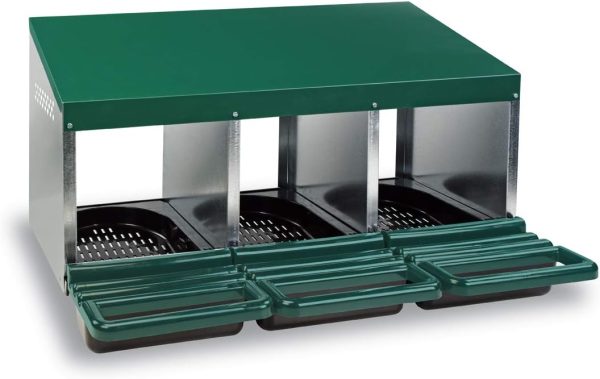
The Homestead Essentials Rollout Chicken Nesting Box:
- Made from: Durable galvanized steel
- Why I love these: Apart from the convenience that comes with roll-out nesting boxes, these nesting boxes are super easy to assemble. The removable trays make cleaning quick and easy. Each box provides a private nesting area for your hens with plenty of room for comfort.
- Bonus feature: Can withstand harsh weather conditions. The flexible plastic trays won’t crack in freezing temperatures, and the clever design prevents nuts and bolts from loosening over time.
- Ideal for: Flocks of up to 8 hens and chicken keepers who value efficiency and easy egg collection, as well as personal space for their chickens.
Remember my previous advice on how many nests you need. Therefore, I recommend maximum 8 hens for 3 nests, instead of 15, like suggested by the supplier.
Similar rollout nesting boxes are also available from other brands, and for more or less hens.
Best Community Style Rollout Box
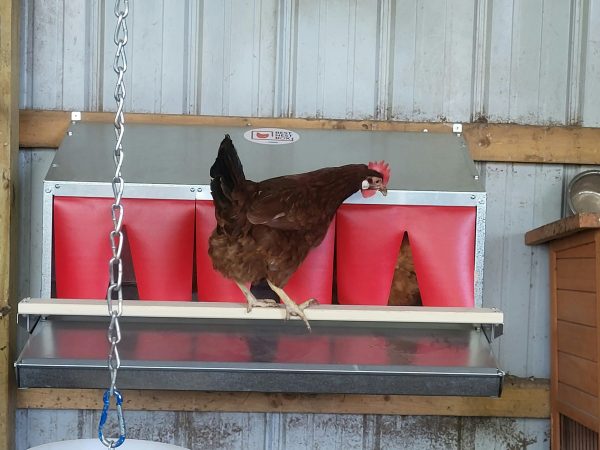
The community style rollout box:
- Made from: High-quality American steel
- Why I love these: This nesting box is built to last, with smooth finishes and perfect fittings. Its community-style design (it is 1 big nesting box for multiple hens) helps reduce overcrowding and encourages hens to lay consistently. It resembles laying nests used by professional chicken farms.
- Bonus feature: Rotating perch bars allow you to close off the nesting box at night, to prevent hens from roosting and dirtying the nesting area.
- Ideal for: More professional farms with larger flocks, or hobby farms with large chicken breeds that don’t ‘fit’in regular sized nesting boxes. For optimal comfort, have less hens per nesting box than the maximum of 32 hens mentioned by the supplier.
Precision Pet Nesting Box
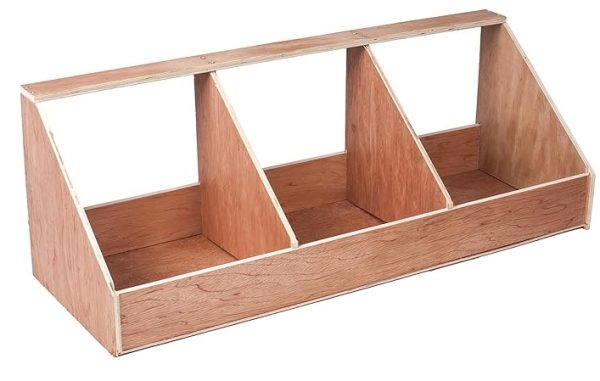
The Precision Pet Nesting Box is:
- Made from: Natural wood
- Why I love these: Simple, cheap and functional, this nesting box offers excellent value for money and is really easy to assemble. Might require some DIY reinforcement to make it more durable and sturdy.
- Bonus feature: The lightweight and compact design makes it easy to move around the coop.
- Ideal for: Chicken keepers on a tight budget who prefer a rustic, natural aesthetic.
7. What Bedding Material Should I Put in a Nesting Box?
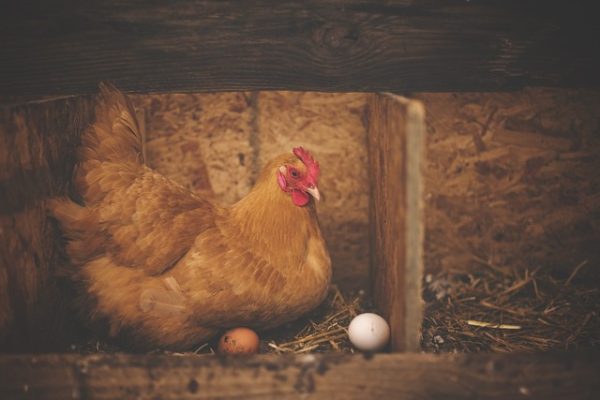
Bedding material in a nesting box not only protects eggs from breaking by adding a soft cushion to the floor, but also makes cleaning easier, and let’s your hens display their natural nesting behavior.
Straw, wood shavings, or shredded, recycled paper are often used as bedding in nesting boxes. Also, hemp materials are now available. If you use straw, like I do, then use chopped straw since it absorbs water better. If you use wood shavings, use pine and not cedar since it irritates the hens’ respiratory system.
Just remember to add a 3-4 inch (9-10 cm) lip on the edge of your chicken nesting box to keep the nesting material in, and also prevent the eggs from rolling out of the box.
In recent times, options like plastic nesting pads and fake grass have gained popularity for being convenient since hens can’t easily kick them out of place. Even though they are convenient and perfectly fine to use, hens do prefer normal bedding material they can rearrange to create a cozy, bowl-shaped nest.
Alternatively, you can have the best of both worlds with a organic nesting pads made from wood shavings or other materials. These nest pads usually come with loose, organic material attached to a paper backing, keeping it in place and preventing a mess. The bedding is thick enough to line the bottom of the box, and hens can still peck, move, and mold it to their liking.
8. Do Nesting Boxes Need To Be Dark?
You bet! Chickens prefer darkness and privacy.when it comes to laying eggs
A dimly lit nesting area mimics the natural conditions, reducing stress for your hens, which can lead to more consistent egg production. Darker environments can also help discourage the nasty egg-eating habit that some chickens can get into.
To create the perfect mood lighting for your laying hens, you can position your nesting boxes in a naturally darker area of the coop. Or if you want to be a little fancy, you can also add curtains or flaps to the entrance of your chicken nesting boxes to block out the light.
9. How Do I Get My Chickens To Use The Nesting Box?
Well, now your chicken nesting box is all set up. But if you can’t convince your little cluckers to actually use them, there’s no point of all the fancy setup.
Chickens can be stubborn and lay wherever they please. But with the right tricks, you can train them to see your nesting boxes as the perfect spot.
Start Early On
If you get hens which are already laying eggs, introduce your hens to the nesting boxes as soon as they arrive in their new coop.
If you find your chickens laying eggs elsewhere, limit access to those places and gently redirect them to the nesting boxes. You can even keep your laying hens in the coop until they’ve all laid their eggs for the day. This helps them associate the nesting boxes with laying time and trains them to return there.
In case you get baby chicks or pullets, not yet laying eggs, make sure to introduce nesting boxes a few weeks before they start laying. For most pullets, this is at an age of about 14-16 weeks old. You could even place them on the floor of the coop (if possible) for a few days so your pullets can get familiar with them.
Place Them in the Right Position in the Coop
Hens are naturally drawn to secluded, dimly lit spots for laying their eggs. Choose a quiet and dark corner of the coop, away from high-traffic areas, the hustle and bustle of feeders and waterers, or any other distractions.
Hens prefer to lay their eggs off the ground. Therefore, use brackets, shelves, or stack nesting boxes on top of each other to elevate nesting boxes.
If your nesting boxes have an open front, make sure they’re faced away from the entrance of the coop to create a greater sense of privacy.
In case your nesting boxes have an open top, do not place them directly under perches, as droppings can fall into the boxes making them less appealing.
And finally, don’t forget about your own convenience. Nesting boxes should be easy for you to access, for egg-collection and regular cleaning.
Ensure Comfort
For optimal comfort, make sure you:
- Select the right nesting box
- Make sure the nesting box is dark by placing it in a dark corner or adding curtains
- Select comfortable organic bedding material they can use to ‘nest’
- Elevate or mount your nesting boxes 1-1,5 feet above ground (30-45 cm)
- Close the nesting boxes during the night if possible, to keep them clean. Make sure to open them again in the morning to prevent floor eggs!
Use Training Eggs
Fake it till they make it! A simple trick is to put a “dummy egg” (or even a golf ball) in each nesting box. This shows your chickens that it’s a safe and popular nesting spot, so they’ll naturally want to lay there.
10. How to clean chicken nesting boxes?
It’s important to clean your nesting boxes regularly to not only prevent the spread of bacteria and parasites, but also make them inviting for your hens.
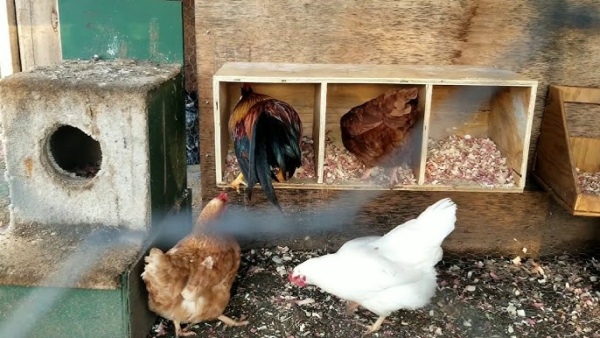
Each time you collect eggs, do a quick scan of all the boxes. Remove any droppings, broken eggs, or feathers to maintain a tidy nesting area.
Use bedding materials that are absorbent and can be easily replaced.
Once a week, remove all the nesting material and scrape off dried manure or dirt. For extra hygiene, you can also scrub the nesting boxes with hot water and soap. I only do this once a month or when I see it is needed. Pay special attention to corners and crevices where dirt and mites might be hiding. Don’t forget to let them dry before adding fresh bedding.
If you have disease problems, you could also disinfect with a poultry-safe disinfectant. After scrubbing with hot water and soap, and drying, that is.
Final Thoughts
Happy hens lay the best eggs! And happy chicken keepers know how to find the right balance between their flock’s comfort and their own convenience.
When choosing a nesting box, make sure you consider your hens’ natural instincts, your coop’s setup, and your ease of maintenance, to keep everyone clucking happily.

